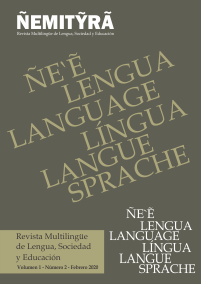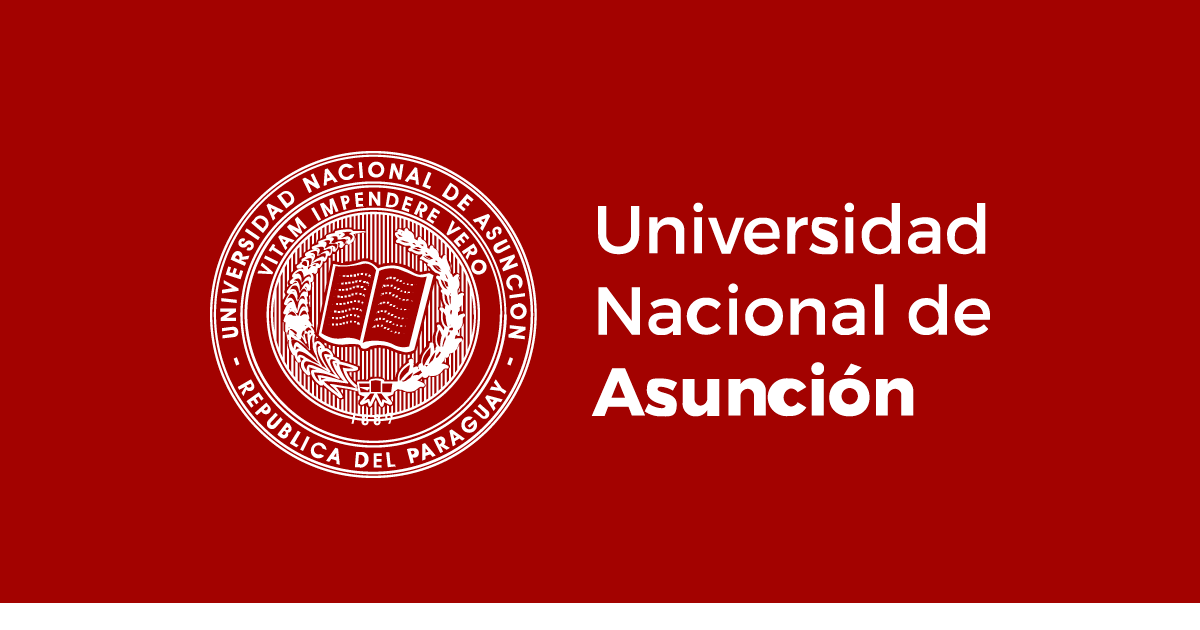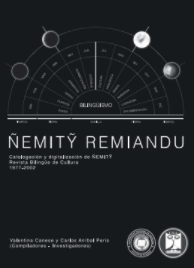Mobile apps for teaching and learning English as a foreign language to a teenagers and adults
Palabras clave:
Language Learning, Language Skills, Mobile learning in Language Teaching, Smartphone ApplicationsResumen
This study evaluated and reviewed phone apps designed to aid in the learning of English of English as a Foreign Language (EFL). From among ninety frequently-downloaded free Android apps, the authors selected and reviewed twelve apps for their potential use by teenagers and adults in EFL classrooms at the intermediate and advanced levels. They employed an author-developed rubric with eight criteria: curriculum connection, authenticity, feedback, differentiation, performance, sharing, user-friendly, and appeal. Findings suggest that several Android apps exist that can potentially enhance the teaching and learning of English. Implications suggest that if teachers are trained at reviewing apps, they can become empowered at selecting digital tools for making their lessons more compelling and student-centered. Yet, to maximize the efficacy of these apps in their EFL classrooms, teachers should provide support and feedback related to the skills being practiced by their students on these apps.
Referencias
August, D., Carlo, M., Dressler, C., & Snow, C. (2005). The critical role of vocabulary development for English language learners. Learning Disabilities Research & Practice, 20(1), 50-57.
Babu, P. S., & Dhanaraju, Z. (2016). The role of teachers in the 21st century. In Proceedings of National Conference on Two Year B.Ed. Programme in the Cradle of Nurturance, Conservation for Quality Management: A Need for Achieving Excellence and Expertise, p.19-22. Madurai, India: Shanlax Publications.
Beetham, H., &Shrape R. (2007) Rethinking Pedagogy for a Digital Age: Designing and Delivering eLearnig. New York, NY: Routledge.
Beatty, K. (2015). Language, Task and Situation: Authenticity in the Classroom. Journal of Language and Education, 1(1).
Blake, R. J. (2013). Brave new digital classroom: Technology and foreign language learning. Georgetown: Georgetown University Press.
Borges, N. J., Manuel, R. S., Elam, C. L., & Jones, B. J. (2010). Differences in motives between Millennial and Generation X medical students. Medical education, 44(6), 570-576.
Brown, H D. (2015). Teaching by Principles: An Interactive Approach to Language Pedagogy. 4th Edition. White Plains, NY: Longman.
Chen, C. & Chung, C. (2008). Personalized Mobile English Vocabulary Learning System Based on Item Response Theory and Learning Memory Cycle. Computers & Education, vol. 51, no. 2., pp. 624-645.
Dudeney, G. & Nicky H. (2007). How to Teach English with Technology. Pearson/Longman.
Eaton, S. E. (2010). Global Trends in Language Learning in the 21st Century. Eaton International Consulting Inc., Onate Press, retrieved from: files.eric.ed.gov/fulltext/ED10276.
Emrah, E & Yaman, I. (2016). A Shift from CALL to MALL? Participatory Education Research. Special Issue 2016-IV, pp., 25-32.
Elam, C., Stratton, T., & Gibson, D. D. (2007). Welcoming a new generation to college: The millennial students. Journal of College admission, 195, 20-25.
Fox, W. & Bayat, M. S. (2007). A Guide to Managing Research. Cape Town: Juta and Co.
Godwin-Jones, R. (2017). Smartphones and language learning. Language Learning & Technology, 21(2), 3-17.
Goodman, P. S. (2001). Technology Enhanced Learning: Opportunities for Change. Mahway, NJ: L. Erlbaum Associates, Inc.
Klimova, B. (2018). Mobile phones and/or smartphones and their apps for teaching English as a foreign language. Education and Information Technologies, 23(3), 1091-1099.
Kolb, L. (2008). Toys to Tools: Connecting Student Cell Phones to Education. Washington DC: ISTE.
Krashen, S. D. (2004). The power of reading: Insights from the research: Insights from the research. Portsmouth, NH: Heinemann.
Larsen-Freeman, D. (1986). Techniques and Principles in Language Teaching. Cambridge: Cambridge University Press.
Lee, C. & Sloan, T. (2015). A Comprehensive Evaluation Rubric for Assessing Instructional Apps. Journal of Information Technology Education Research, vol. 14. pp. 21-53.
Lodico, M. G., Spaulding, D.T. & Voegtle, K. (2006) Methods in Educational Research: From Theory to Practice. San Francisco, CA: Jossey-Bass.
McQuiggan, S., et al. (2015). Mobile Learning: A Handbook for developers, Educators, and Learners. Hoboken, NJ: John Willey & Sons.
Mercado, L. A. (2012). English Language Learning and Technology. Buenos Aires: Cengage Learning.
Motteram, G. [Ed.] (2013). Innovations in Learning Technologies for English Language Teaching. London: British Council.
Murphy, K., De Pasquale, R., & McNamara, E. (2003). Meaningful connections: Using technology in primary classrooms. Young Children, 58(6), 12-18.
Mutt, S. (2013). Monday Made it! App Review Rubric for Kid Critics. Digital: Divide & Conquer, digitaldivideandconquer.blogspot.ca/2013/07/monday-made-it-app-review-rubric-for.html.
Pilgrim, J., Bledsoe, C., & Reily, S. (2012). New technologies in the classroom. Delta Kappa Gamma Bulletin, 78(4).
Pim, C. (2013). Emerging technologies, emerging minds: digital innovations within the primary sector. Innovations in learning technologies for English language teaching, 17-42.
Pletka, B. (2007). Educating the Net Generation: How to engage students in the 21st century. Los Angeles: Santa Monica Press.
Qiang, C. Z., Kuek, S. C., Dymond, A., & Esselaar, S. (2011). Mobile Applications for Agricultural and Rural Development. ICT Sector Unit: World Bank.
Rhodes, W. (2015). What makes a Great App? SAVVY Apps. N.p. July.
Richards, J. C. & Rodgers, T. S. (2014). Approaches and Methods in Language Teaching. 3rd.
Edition. Cambridge: Cambridge University Press.
Rickes, P. C. (2009). Make way for millennials! How today's students are shaping higher education space. Planning for Higher Education, 37(2), 7.
Robson, M. (2013). The English Effect: The impact of English, what it’s worth to the UK and why it matters to the world. London: British Council.
Sarwar, M., & Soomro, T. R. (2013). Impact of smartphones on society. European journal of scientific research, 98(2), 216-226.
Scarcella, R. C. & Oxford. R. (1992). The Tapestry of Language Learning: The Individual in the Communicative Classroom. Boston: Heinle & Heinle.
Schleicher, A. (2012). Preparing Teachers and Developing School Leaders from the 21st Century. Lessons from around the World. Paris: OECD.
Thoman, E. (2002). Screen-Agers... and the Decline of the Wasteland. Fed. Comm. LJ, 55, 601.
Vincent, T. (2012). Ways to evaluate educational apps. Learning in Hand. Retrieved from http://learningin-hand.com/blog/ways-to-evaluate-educational-apps.html.
Walker, H. (2011). Evaluating the effectiveness of apps for mobile devices. Journal of Special Education Technology, 26(4), 59-63.
_________. (2014). Establishing content validity of an evaluation rubric for mobile technology applications utilizing the Delphi method. Doctoral dissertation, Johns Hopkins University.
Warschauer, M., & Kern, R. (2000). Network-based language teaching: Concepts and practice. Cambridge, UK: Cambridge University Press.
West, M., & Vosloo, S. (2013). UNESCO policy guidelines for mobile learning. Paris, FR: United Nations Educational Scientific and Cultural Organization.










